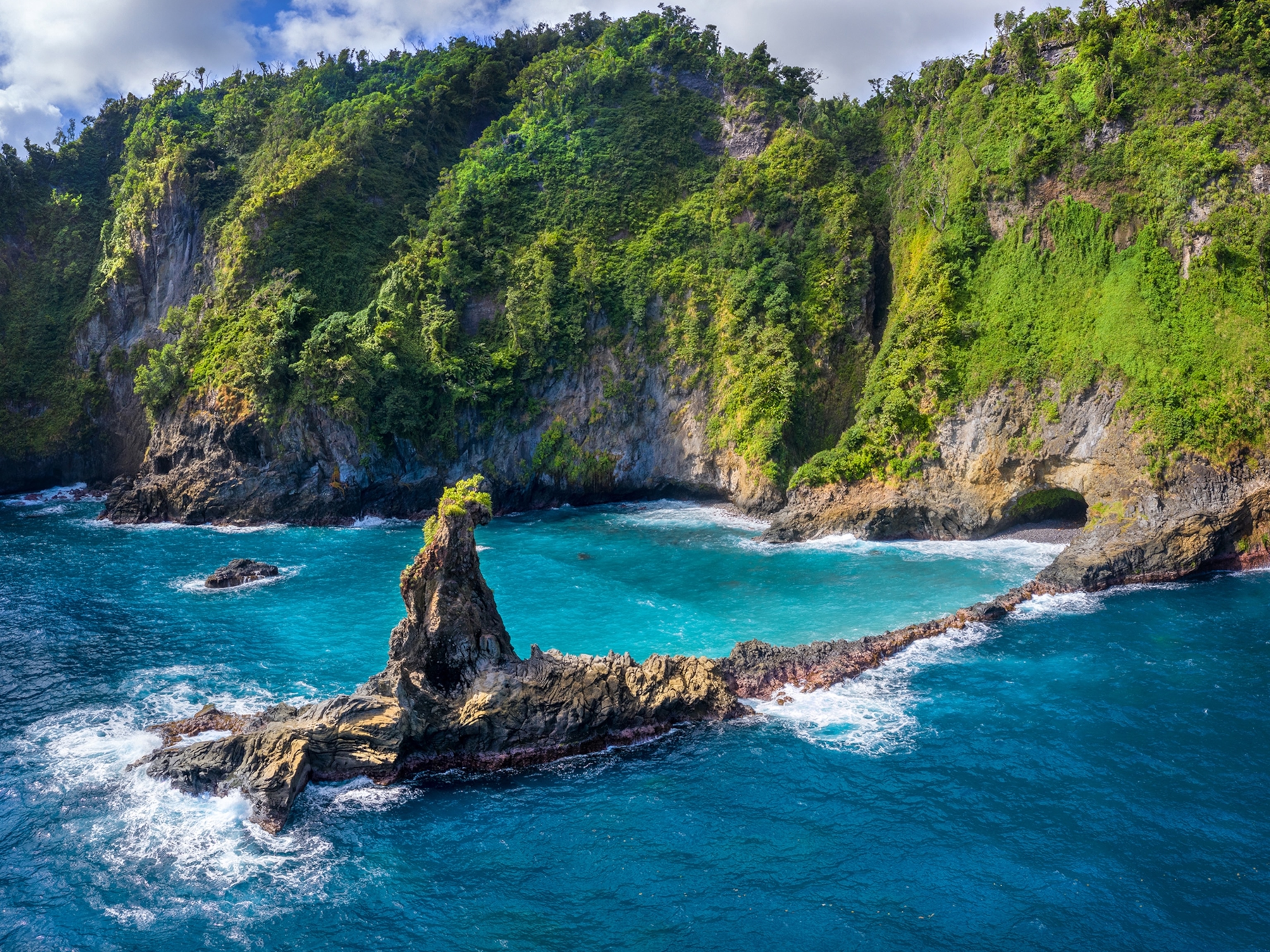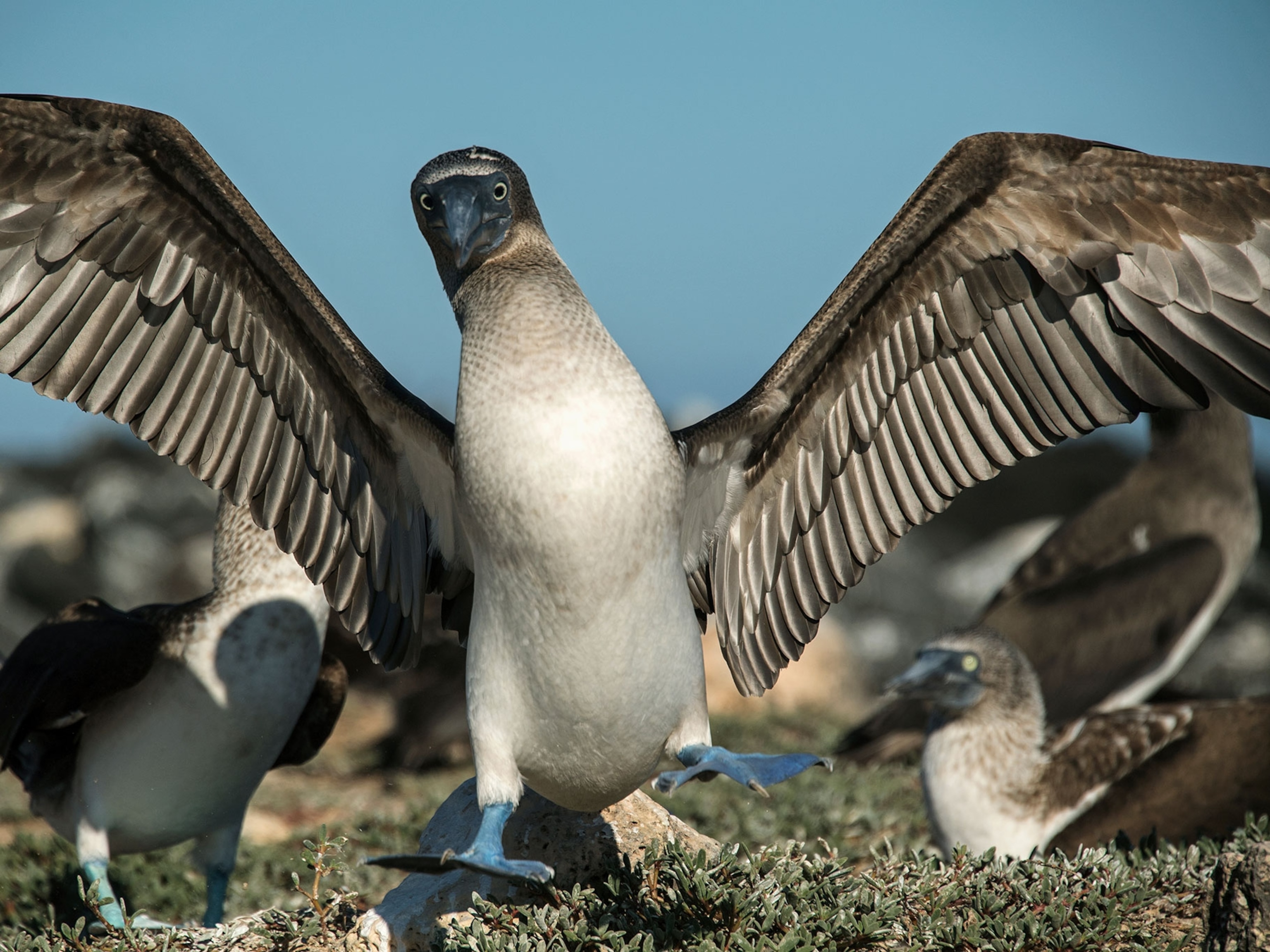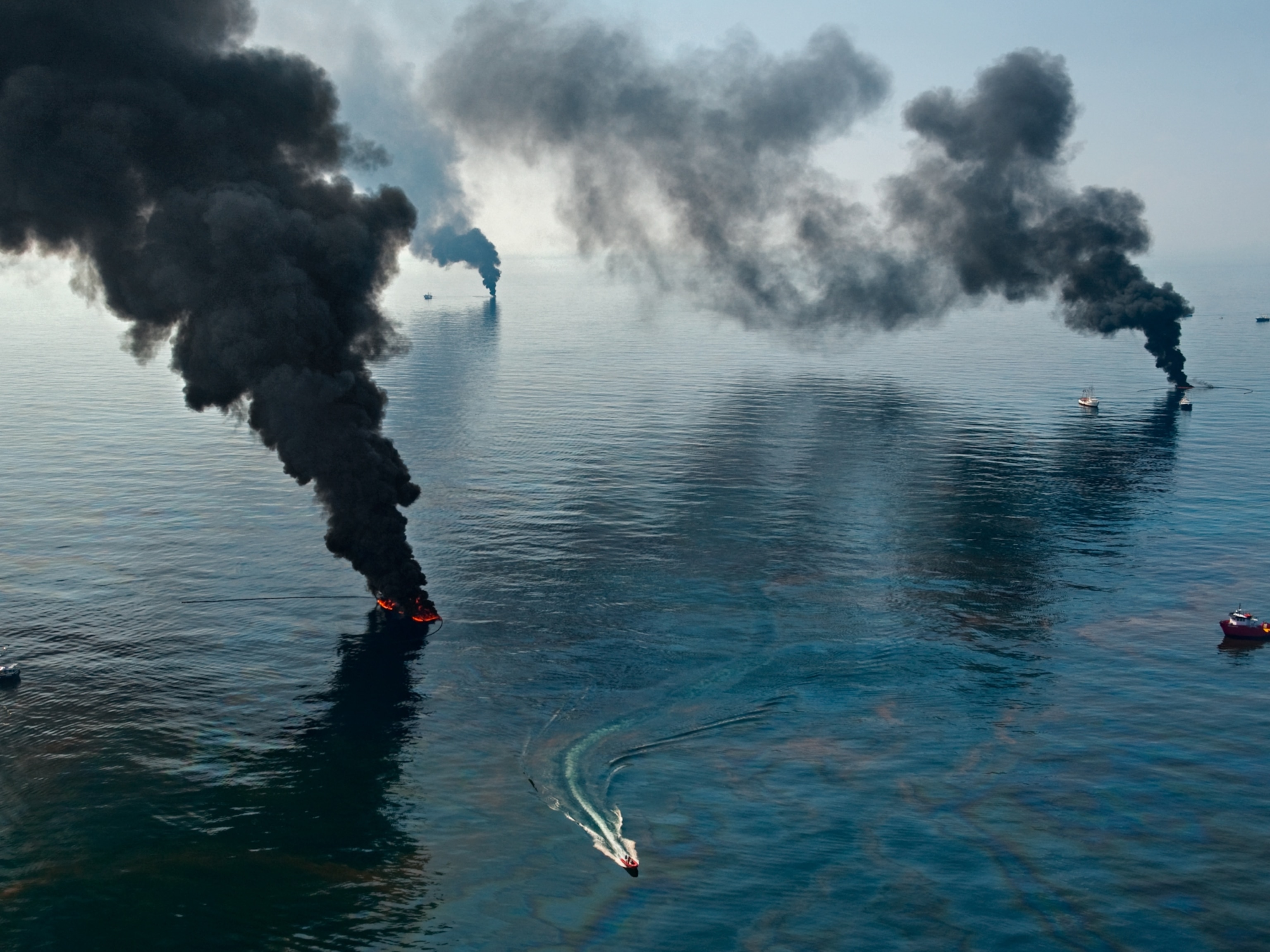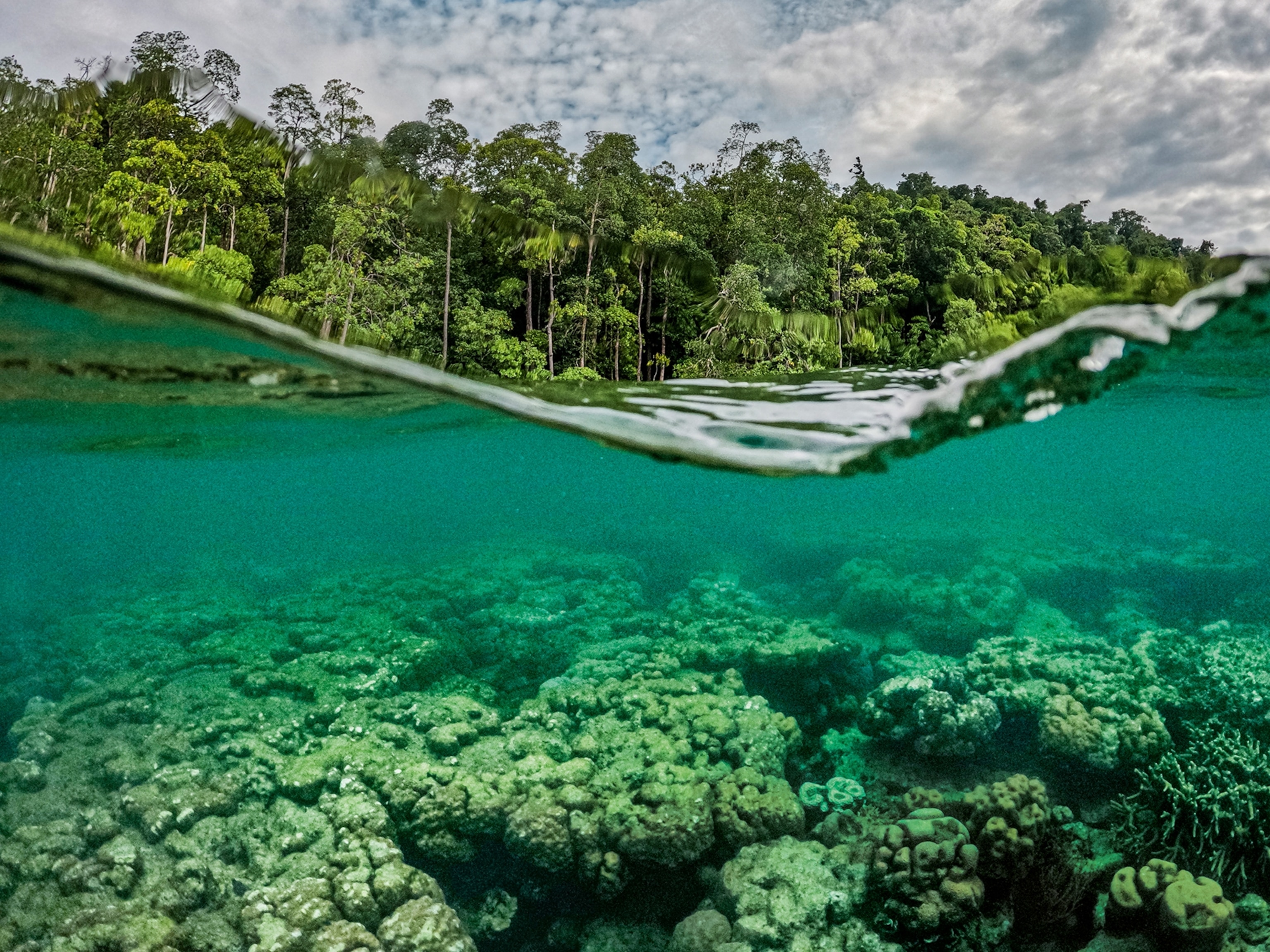Where Obama’s Deep Love for the Ocean Comes From
Obama protected more of the sea than anyone. A venture off the Midway Islands revealed why conservation was a personal mission for him.
Learn more about ocean life in Sea of Hope: America’s Underwater Treasures, premiering Sunday, January 15th at 7/6c on National Geographic.
The man who has protected more of the sea than anyone in history is entirely at ease in it. You see that right away. In September, just months before he was set to leave the White House, President Barack Obama slipped into the middle of the Pacific Ocean wearing only fins, trunks, a mask, and a snorkel. The sun shimmered on Midway Islands, a remote speck of reef halfway between California and China. A rainbow of colors from shallow mounds of coral rippled in the clear water. The sea’s usual constituents were there—algae-munching surgeonfish, spectacled parrotfish, jacks, urchins.
That morning Obama had arrived on Midway’s Sand Island to show off Papahānaumokuākea Marine National Monument, which his administration had just transformed into the world’s largest protected area at the time, a stretch of sea more than twice the size of France. Before his swim, while ghost crabs skittered across the sand, the president strolled alongside flowering naupaka and spoke of the marine world’s hold on him. He attributed his calm—what critics call his aloofness—to being born in Hawaii and “knowing what it’s like to jump into the ocean and understanding what it means when you see a sea turtle in the face of a wave.” Then Obama wanted to jump in the ocean again, right there. National Geographic photographer Brian Skerry was invited along.
They left on boats and tied them to an orange buoy above a splash of purple rice coral. Midway is magical but not pristine. More than 5,000 people packed its 2.4 square miles during World War II. They dredged reefs for submarines and lined them with mines. Today invasive emerald beetles flit past non-native ironwood trees that were planted as windbreaks a century ago by workers laying telegraph cable. And yet Midway feels not just wild but primal, hosting three million birds, the world’s largest albatross colony, sea turtles, spinner dolphins, and rare ducks.
Obama entered a shallow sea moving with yellow-tinged butterfly fish and wrasse. Sea cucumbers stood on end because they’d recently spawned. Endangered monk seals sunned themselves nearby. Sometimes the president stood on sand near the coral to ask questions of Skerry and a guide. But just as often he moved alone, slowly investigating the life below him or, at times, swimming hard and fast with the fluidity of an athlete, the leader of the free world embracing a brief moment of actual freedom.
Obama gets the draw of wild places. When chafing at the straitjacket of the presidency, he spoke wistfully about a predecessor known for his conservation efforts. “Teddy Roosevelt would go up to Yellowstone Park for like a month, and nobody knew where he was,” Obama once said. It was Roosevelt, a lifelong outdoorsman, who signed the Antiquities Act in 1906 and used it to protect the Grand Canyon, Devils Tower in Wyoming, and other majestic places, some of which later became national parks. With Congress in gridlock and the oceans pressured by overfishing, pollution, and climate change, Obama turned to the same executive authority.
At an oceans conference weeks later, Obama still seemed entranced by the Pacific. He harked back to his swim as a reminder of the seas’ resilience. “I saw it,” Obama said. “It was right there—evidence of the incredible power of nature to rebuild itself if we’re not consistently trying to tear it down.”





